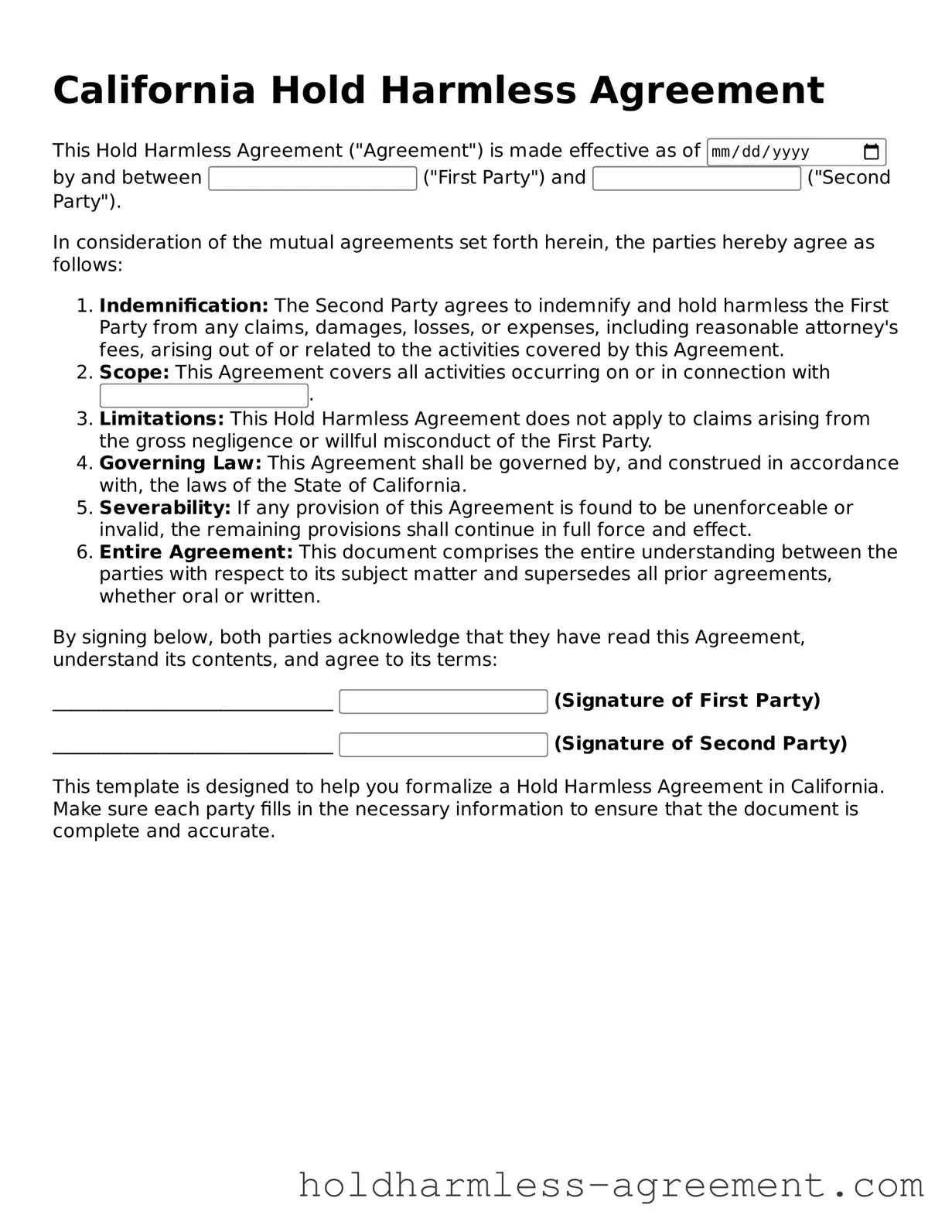What is a California Hold Harmless Agreement?
A California Hold Harmless Agreement is a legal document that protects one party from liability or claims that may arise from a specific activity or event. Essentially, one party agrees not to hold the other responsible for any injuries, damages, or losses that may occur during that activity. This agreement is often used in various situations, such as rental agreements, construction projects, and events.
Who typically uses a Hold Harmless Agreement?
Various parties may use a Hold Harmless Agreement, including:
-
Landlords and tenants
-
Event organizers and participants
-
Contractors and clients
-
Businesses and customers
Any situation where one party wants to limit their liability can benefit from this agreement.
What are the key components of a Hold Harmless Agreement?
A Hold Harmless Agreement generally includes the following components:
-
The names of the parties involved.
-
A clear description of the activity or event covered by the agreement.
-
The specific liabilities being waived.
-
The duration of the agreement.
-
Signatures of all parties involved.
These elements help ensure that all parties understand their rights and responsibilities.
Is a Hold Harmless Agreement legally binding in California?
Yes, a Hold Harmless Agreement can be legally binding in California, provided it meets certain criteria. The agreement must be clear, specific, and voluntarily signed by all parties. However, California law may not enforce certain clauses, especially those that attempt to waive liability for gross negligence or willful misconduct. It is advisable to consult with a legal professional to ensure compliance with state laws.
Can a Hold Harmless Agreement be modified or revoked?
Yes, a Hold Harmless Agreement can be modified or revoked if all parties agree to the changes. It is essential to document any modifications in writing and have all parties sign the updated agreement. This ensures clarity and helps avoid disputes in the future.
What should I do if I am asked to sign a Hold Harmless Agreement?
If you are asked to sign a Hold Harmless Agreement, take the time to read it carefully. Consider the following steps:
-
Understand the scope of the agreement.
-
Identify what liabilities you are waiving.
-
Assess whether the agreement is fair and reasonable.
-
Consult with a legal professional if you have any concerns or questions.
Your understanding and comfort with the agreement are crucial before signing.
What happens if I do not sign the Hold Harmless Agreement?
If you choose not to sign the Hold Harmless Agreement, the other party may decide not to allow you to participate in the activity or event. This is often a condition for participation, as the agreement protects the other party from potential claims. It is essential to weigh your options and understand the implications of not signing.
